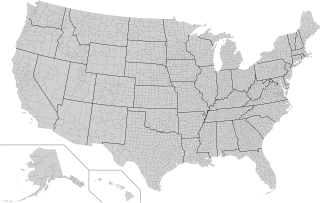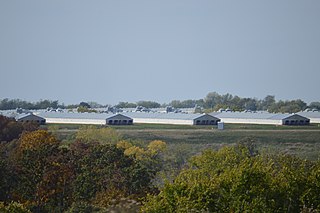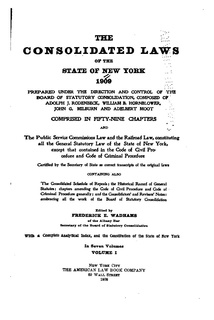
The Food and Drug Administration is a federal agency of the United States Department of Health and Human Services, one of the United States federal executive departments. The FDA is responsible for protecting and promoting public health through the control and supervision of food safety, tobacco products, dietary supplements, prescription and over-the-counter pharmaceutical drugs (medications), vaccines, biopharmaceuticals, blood transfusions, medical devices, electromagnetic radiation emitting devices (ERED), cosmetics, animal foods & feed and veterinary products.

In the United States, a county is an administrative or political subdivision of a state that consists of a geographic region with specific boundaries and usually some level of governmental authority. The term "county" is used in 48 U.S. states, while Louisiana and Alaska have functionally equivalent subdivisions called parishes and boroughs, respectively.

An animal shelter or pound is a place where stray, lost, abandoned or surrendered animals, mostly dogs and cats, and sometimes sick or wounded wildlife are kept and rehabilitated. While no-kill shelters exist, it is sometimes policy to euthanize sick animals, and any animal that is not claimed quickly enough by a previous or new owner. In Europe, of 30 countries included in a survey, all but four permitted the killing of healthy stray dogs. Critics believe the new term "animal shelter" is generally a euphemism for the older term "pound". The word "pound" had its origins in the animal pounds of agricultural communities, where stray livestock would be penned or impounded until claimed by their owners.

The Animal and Plant Health Inspection Service (APHIS) is an agency of the United States Department of Agriculture (USDA) based in Riverdale, Maryland responsible for protecting animal health, animal welfare, and plant health. APHIS is the lead agency for collaboration with other agencies to protect U.S. agriculture from invasive pests and diseases. APHIS is the National Plant Protection Authority for the U.S. government, and the agency's head of veterinary services is Chief Veterinary Officer of the United States.

Air hockey is a game where two players play against each other on a low-friction table. Air hockey requires an air-hockey table, two player-held strikers, and a puck.
A Special Agent, in the United States, is usually a criminal investigator or detective for a federal or state government, who primarily serves in investigatory positions. Additionally, many federal and state "Special Agents" operate in "criminal intelligence" based roles as well. Within the US federal law enforcement system, dozens of federal agencies employ federal law enforcement officers, each with different criteria pertaining to the use of the titles Special Agent and Agent.
Animal euthanasia is the act of putting an animal to death or allowing it to die by withholding extreme medical measures. Reasons for euthanasia include incurable conditions or diseases, lack of resources to continue supporting the animal, or laboratory test procedures. Euthanasia methods are designed to cause minimal pain and distress. Euthanasia is distinct from animal slaughter and pest control although in some cases the procedure is the same.

The Animal Welfare Act was signed into law by President Lyndon B. Johnson on August 24, 1966. It is the main federal law in the United States that regulates the treatment of animals in research and exhibition. Other laws, policies, and guidelines may include additional species coverage or specifications for animal care and use, but all refer to the Animal Welfare Act as the minimally acceptable standard for animal treatment and care. The USDA and APHIS oversee the AWA and the House and Senate Agriculture Committees have primary legislative jurisdiction over the Act. Animals covered under this Act include any live or dead cat, dog, hamster, rabbit, nonhuman primate, guinea pig, and any other warm-blooded animal determined by the Secretary of Agriculture for research, pet use or exhibition. Excluded from the Act are birds, rats of the genus Rattus, mice of the genus Mus, farm animals, and all cold-blooded animals.

In animal husbandry, a concentrated animal feeding operation (CAFO), as defined by the United States Department of Agriculture (USDA), is an intensive animal feeding operation (AFO) in which over 1000 animal units are confined for over 45 days a year. An animal unit is the equivalent of 1000 pounds of "live" animal weight. A thousand animal units equates to 1000 cows, 700 cows used for dairy purposes, 2500 pigs weighing more than 55 lbs, 125 thousand chickens, or 82 thousand egg laying hens or pullets.

The Humane Slaughter Act, or the Humane Methods of Livestock Slaughter Act is a United States federal law designed to decrease suffering of livestock during slaughter. It was approved on August 27, 1958. The most notable of these requirements is the need to have an animal completely sedated and insensible to pain. This is to minimize the suffering to the point where the animal feels nothing at all, instead losing a consciousness from which they will never awaken. This differs from animal to animal as size increases and decreases. Larger animals such as bovines require a stronger method than chickens, for example. Bovines require electronarcosis or something equally potent, though electronarcosis remains a standard. The bovine would have a device placed on their head that, once activated, sends an electric charge that efficiently and safely stuns them. Chickens, on the other hand, require much less current to be efficiently sedated and are given a run under electrically charged water. To ensure that these guidelines are met, The Food Safety and Inspection Service inspectors at slaughtering plants are responsible for overseeing compliance, and have the authority to stop slaughter lines and order plant employees to take corrective actions. Although more than 168 million chickens and around 9 billion broiler chickens are killed for food in the United States yearly, the Humane Slaughter Act specifically mentions only cattle, calves, horses, mules, sheep and swine.

The Federal Agriculture Improvement and Reform Act of 1996, known informally as the Freedom to Farm Act, the FAIR Act, or the 1996 U.S. Farm Bill, was the omnibus 1996 farm bill that, among other provisions, revises and simplifies direct payment programs for crops and eliminates milk price supports through direct government purchases.
President Chester A. Arthur signed the Animal Industry Act on May 29, 1884 creating the Bureau of Animal Industry (BAI), an organization that was established under the United States Department of Agriculture. It replaced the Veterinary Division that had been created by the Commissioner of Agriculture in 1883, which had taken over for the Treasury Cattle Commission, Department of Treasury.
The American Herbal Products Association (AHPA) is a trade association for the herbal products industry, founded in 1982 and based in Silver Spring, Maryland. Members of AHPA are domestic and foreign companies doing business as growers, processors, manufacturers and marketers of herbs and herbal products. AHPA's membership also includes companies that provide expert services to the herbal trade, including analytical laboratories, insurance providers, non-profit associations, higher education institutions, law firms and more.

The Consolidated Farm and Rural Development Act of 1972 or Con Act authorized a major expansion of USDA lending activities, which at the time were administered by Farmers Home Administration (FmHA). The legislation was originally enacted as the Consolidated Farmers Home Administration Act of 1961. In 1972, this title was changed to the Consolidated Farm and Rural Development Act, and is often referred to as the Con Act.

The Consolidated Farm and Rural Development Act of 1961 authorized a major expansion of USDA lending activities, which at the time were administered by Farmers Home Administration (FmHA), but now through the Farm Service Agency. The legislation was originally enacted as the Consolidated Farmers Home Administration Act of 1961.

The Plant Quarantine Act, originally enacted in 1912, gave the Animal and Plant Health Inspection Service (APHIS) authority to regulate the importation and interstate movement of nursery stock and other plants that may carry pests and diseases that are harmful to agriculture. This Act has been superseded by the consolidated APHIS statute, the Plant Protection Act of 2000. This authority is particularly important to the agency’s ability to prevent or limit the spread of harmful invasive species within or to a state or region of the United States.
Ag-gag laws are anti-whistleblower laws that apply within the agriculture industry. Popularized by Mark Bittman in an April 2011 New York Times column, the term ag-gag typically refers to state laws that forbid the act of undercover filming or photography of activity on farms without the consent of their owner—particularly targeting whistleblowers of animal rights abuses at these facilities. These laws originated in the United States, but have also begun to appear elsewhere, such as in Australia and France. Some of these laws, such as the failed proposal in Pennsylvania, have a wider scope and could be used to criminalize actions by activists in other industries.

The Consolidated Laws of the State of New York are the codification of the permanent laws of a general nature of New York enacted by the New York State Legislature.

The Wisconsin Department of Agriculture, Trade and Consumer Protection is a governmental agency of the U.S. state of Wisconsin responsible for regulating agriculture, trade, and commercial activity in the state. The department is administered by a secretary who is appointed by the governor and confirmed by the Senate.
Johanns v. Livestock Marketing Association, 544 U.S. 550 (2005), is a First Amendment case of the Supreme Court of the United States. At issue was whether a beef producer could be compelled to contribute to beef industry advertising.












